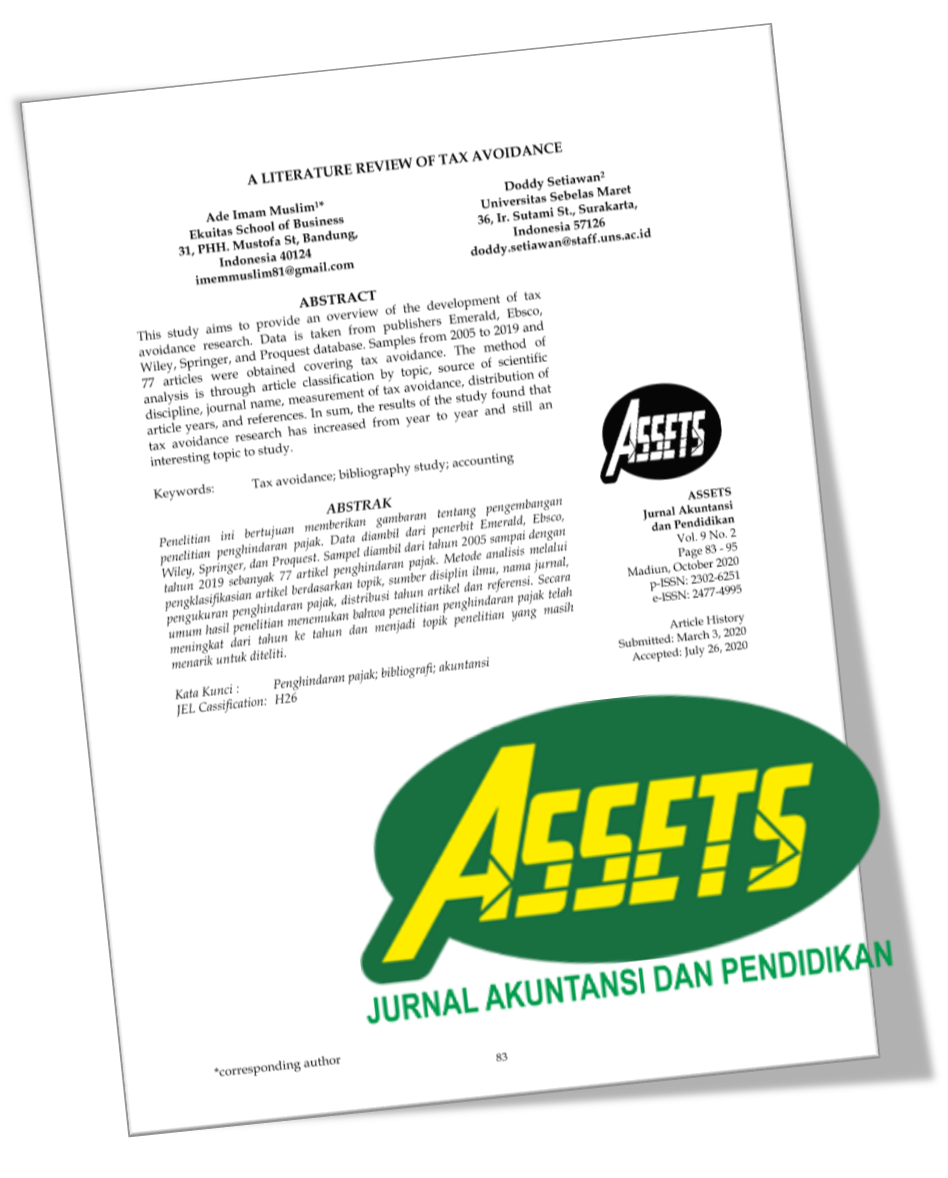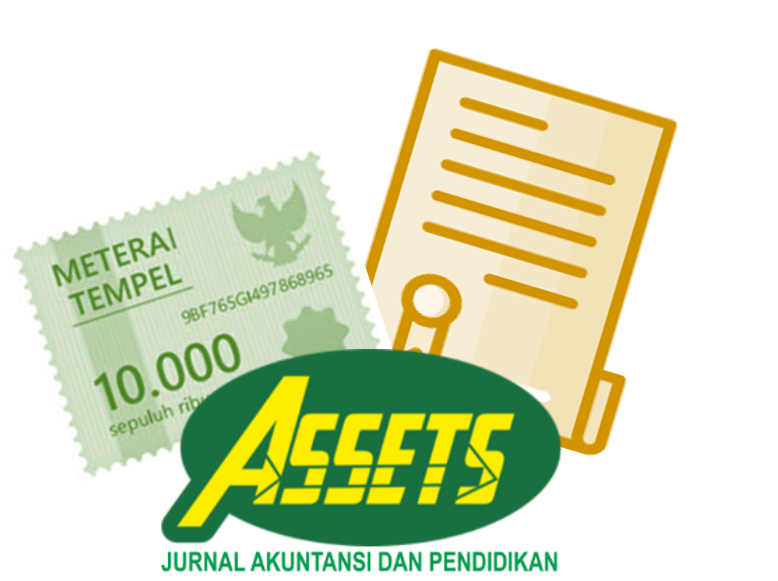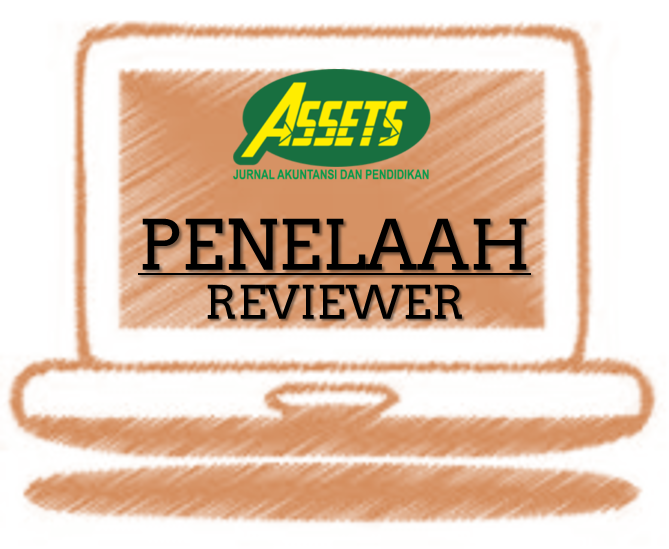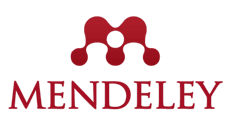DOES "IS" INNOVATION DIFFUSION CONTRIBUTE TO THE NON-FINANCIAL PERFORMANCE OF THE VILLAGE GOVERNMENT?
DOI:
https://doi.org/10.25273/jap.v12i1.13984Keywords:
IS Innovation Diffusion, Organization Support, Technology Advantage, Village Government, Indonesia, Difusi Inovasi SI, Dukungan Organisasi, Keunggulan Teknologi, Pemerintah DesaAbstract
ABSTRACT
This research paper analyzes the Influence of IS innovation diffusion on the performance/ outcome of the village government. Besides this paper also determines the role of organizational support and technological advantage in determining performance. Finally, this study researched these variables as moderating between IS innovation diffusion and implementation. The primary data was collected through a survey and analyzed using the smart-pls. The result shows that the technological advantage is significantly associated with the performance of the village government. This finding contributes to the technology organization environment.
ABSTRAK
Penelitian ini menganalisis pengaruh difusi inovasi SI terhadap kinerja pemerintah desa. Selain itu, penelitian ini juga menentukan peran dukungan organisasi dan keunggulan teknologi dalam menentukan kinerja. Terakhir, penelitian ini juga meneliti variabel-variabel tersebut sebagai variabel pemoderasi antara difusi inovasi SI dan kinerja. Data primer dikumpulkan melalui survei dan dianalisis menggunakan smart-pls. Hasil penelitian menunjukkan bahwa keunggulan teknologi berpengaruh secara signifikan dengan kinerja pemerintah desa. Temuan ini secara teoritis berkontribusi pada technology organization environment.
Downloads
References
Adiputra, I. M. P., Utama, S., & Rossieta, H. (2018). Transparency of local government in Indonesia. Asian Journal of Accounting Research, 3(1), 123–138. https://doi.org/10.1108/ajar-07-2018-0019
Antlöv, H., Wetterberg, A., & Dharmawan, L. (2016). Village governance, community life, and the 2014 village law in Indonesia. Bulletin of Indonesian Economic Studies, 52(2), 161–183. https://doi.org/10.1080/00074918.2015.1129047
Arikunto, S. (2010). Prosedur Metedologi Penelitian: Suatu Pendekatan Praktis. Penerbit Rhineka Cipta.
Bagozzi, R. R., & Yi, Y. (1988). On the Evaluation of Structural Equation Models. Journal of the Academy of Marketing Science, 16(1), 74–94.
Barney, J. B. (1991). Firm Resources and Sustained Competitive Advantage. Journal of Management, 17(1), 99–120. https://doi.org/10.1177/014920639101700108
Bharadwaj, A. S. (2000). A resource-based perspective on information technology capability and firm performance: an empirical investigation. MIS Quarterly, 24(1), 169–196.
Chin, W. W. (1998). The partial least squares approach to structural equation modeling in G. A. Marcoulides (Ed.). In Modern methods for business research (pp. 295–236). Lawrence Erlbaum Associates.
Eisend, M., Evanschitzky, H., & Calantone, R. J. (2016). The Relative Advantage of Marketing over Technological Capabilities in Influencing New Product Performance : Institutions. Journal of International Marketing, 24(1), 41–56. https://doi.org/10.1509/jim.15.0068
Elbanna, A., & Newman, M. (2022). The bright side and the dark side of top management support in Digital Transformaion – A hermeneutical reading. Technological Forecasting & Social Change, 175, 121411. https://doi.org/10.1016/j.techfore.2021.121411
Ellingson, D. A., & Wambsganss, J. R. (2001). Modifying the approach to planning and evaluation in governmental entities: “A balanced scorecard†approach. J. Public Budg. Account. Financ. Manag., 13(1), 103–120.
Erskine, M. A., Khojah, M., & Mcdaniel, A. E. (2019). Location Selection using Heat Maps : Relative Advantage, Task- Technology Fit, and Decision-Making Performance. Computers in Human Behavior, 101, 151–162. https://doi.org/10.1016/j.chb.2019.07.014
Fichman, R. G. (2001). The Role of Aggregation in the Measurement of IT-Related Organizational Innovation. MIS Quarterly, 25(4), 401–429. https://doi.org/10.2307/3250990
GarcÃa-Sánchez, E., Guerrero-villegas, J., & Aguilera-Caracuel, J. (2018). How Do Technological Skills Improve Reverse Logistics ? The Moderating Role of Top Management Support in Information Technology Use and Innovativeness. Sustainability, 11(1), 1–17. https://doi.org/10.3390/su11010058
Grant, R. M. (1991). A Resource-based theory of competitive advantage implications for strategy formulation. California Management Review, 33(3), 114–135. https://doi.org/10.2307/41166664
Grover, V., & Goslar, M. D. (1993). The Initiation, Adoption, and Implementation of Telecommunications Technologies in U . S . Organizations. Journal of Management Information Systems, 10(1), 141–163. https://doi.org/10.1080/07421222.1993.11517994
Hair, J. F., Hult, G. T. M., Ringle, C. M., & Sarstedt, M. (2017). A primer on partial least squares structural equation modeling (PLS-SEM). SAGE Publication. https://doi.org/10.1017/CBO9781107415324.004
Henseler, J. (2010). On the convergence of the partial least squares path modeling algorithm. Computational Statistics, 25(1), 107–120. https://doi.org/10.1007/s00180-009-0164-x
Hoque, Z., & James, W. (2000). Linking Balanced Scorecard Measures to Size and Market Factors : Impact on Organizational Performance. Journal of Management Accounting Research, 12(1), 1–17.
Hossain, M. N., Talukder, M. S., Hoque, M. R., & Bao, Y. (2018). The use of open government data to citizen empowerment: an empirical validation of a proposed model. Foresight, 20(6), 665–680. https://doi.org/10.1108/FS-03-2018-0027
Hsu, H.-Y., Liu, F.-H., Tsou, H.-T., & Chen, L.-J. (2018). Openness of technology adoption, top management support, and service innovation : a social innovation perspective. Journal of Business & Industrial Marketing, 34(3), 575–590. https://doi.org/10.1108/JBIM-03-2017-0068
Hulland, J. (1999). Use of partial least square (PLS) in strategic management research: a review of four recent studies. Strategic Management Journal, 20, 195–204.
Jane Lenard, M., Yu, B., Anne York, E., & Wu, S. (2014). Impact of board gender diversity on firm risk. Managerial Finance, 40(8), 787–803. https://doi.org/10.1108/MF-06-2013-0164
Japutra, A., Molinillo, S., Utami, A. F., & Ekaputra, I. A. (2022). Exploring the effect of relative advantage and challenge on customer engagement behavior with mobile commerce applications. Telematics and Informatics, 72, 101841.
Lederer, B. A. L., & Mendelow, A. L. (1988). Convincing Top Management of the Strategic Potential of Information Systems. MIS Quarterly, 12(4), 525–534.
Lee, S., & Kim, K. (2007). Factors affecting the implementation success of Internet-based information systems. Computers in Human Behavior, 23(4), 1853–1880. https://doi.org/10.1016/j.chb.2005.12.001
Maiga, A. S., & Jacobs, F. A. (2003). Balanced scorecard, activity-based costing, and company performance : An empirical analysis. Journal of Managerial Issues, 15(3), 283–301.
Mcginnis, M. A., & Ackelsberg, M. R. (1983). Effective innovation management : missing link in strategic planning ? Journal of Business Strategy, 4(1), 59–66.
Mergel, I. (2013). A framework for interpreting social media interactions in the public sector. Government Information Quarterly, 30(4), 327–334. https://doi.org/10.1016/j.giq.2013.05.015
Meyer, A. D., & Goes, J. B. (1988). Organizational assimilation of innovations : a multilevel contextual analysis. Academy of Management Journal, 31(4), 897–923.
Moghavvemi, S., Salleh, N. A. M., Zhao, W., & Mattila, M. (2012). The entrepreneur’s perception on information technology innovation adoption: An empirical analysis of the role of precipitating events on usage behavior. Innovation: Management, Policy and Practice, 14(2), 231–246. https://doi.org/10.5172/impp.2012.14.2.231
Palm, A. (2022). Innovation systems for technology diffusion : An analytical framework and two case studies. Technological Forecasting & Social Change, 182(March 2021), 121821. https://doi.org/10.1016/j.techfore.2022.121821
Premkumar, G., & Roberts, M. (1999). Adoption of new information technologies in rural small businesses. Omega, Int. J. Mgmt. Sci, 27(4), 467–484.
Rajagopal, P. (2002). An innovation-diffusion view of implementation of enterprise resource planning (ERP) systems and development of a research model. Information & Management, 40, 87–114.
Ranganathan, C., Dhaliwal, J. S., & Teo, T. S. H. (2004). Assimilation and Diffusion of Web Technologies in Supply-Chain Management : An Examination of Key Drivers and Performance Impacts. International Journal of Electronic Commerce, 9(1), 127–161. https://doi.org/10.1080/10864415.2004.11044319
Roengtam, S., Nurmandi, A., Almarez, D. N., & Kholid, A. (2017). Does social media transform city government? A case study of three ASEAN cities: Bandung, Indonesia, Iligan, Philippines and Pukhet, Thailand. In Transforming Government: People, Process and Policy, 11(3). https://doi.org/10.1108/TG-10-2016-0071
Rogers, E. M. (1995). Diffusion of Innovation (4th ed). The Free Press.
Rogers, E. M. (2003). Diffusion of Innovations (5th ed). Free Press.
Santhanam, R., & Hartono, E. (2003). Issues in Linking Information Technology Capability to Firm Performance. MIS Quarterly, 27(1), 125–153.
Solano, J., Ovalles, M. P. De, Rojas, T., Padua, A. G., & Morales, L. M. (2013). Integration of systemic quality and the balanced scorecard. Information System Management, 20(1), 64–79.
Swanson, E. B., & Ramiller, N. C. (2004). Innovation mindfully with information technology. MIS Quarterly, 28(4), 553–583.
Tanriverdi, H. (2005). Information technology relatednes, knowledge management capability, performance of multibusiness firms. MIS Quarterly, 29(2), 311–334.
Tornatzky, & Fleischer, M. (1990). The processes of technological innovation. Lexington Books.
Vinzi, V. E., Chin, W. W., Henseler, J., & Wang, H. (2010). Handbook of Partial Least Square: Concepts, Methods, and Applications. Springer. https://doi.org/10.1007/978-3-540-32827-8
Wade, M., & Hulland, J. (2004). Review : The resource-based view and information systems research : Review, extension, and suggestions for future research. MIS Quarterly, 28(1), 107–142.
Wang, Y., Wang, Y., & Yang, Y. (2010). Technological Forecasting & Social Change Understanding the determinants of RFID adoption in the manufacturing industry. Technological Forecasting & Social Change, 77(5), 803–815. https://doi.org/10.1016/j.techfore.2010.03.006
Wu, I., & Chuang, C. (2010). Examining the diffusion of electronic supply chain management with external antecedents and fi rm performance : A multi-stage analysis. Decision Support Systems, 50(1), 103–115. https://doi.org/10.1016/j.dss.2010.07.006
Wu, I. L., & Chen, J. L. (2014). A stage-based diffusion of IT innovation and the BSC performance impact: A moderator of technology-organization-environment. Technological Forecasting and Social Change, 88, 76–90. https://doi.org/10.1016/j.techfore.2014.06.015
Yeniyurt, S. (2003). A literature review and integrative performance measurement framework for multinational companies. Marketing Intelligence & Planning, 21(3), 134–142. https://doi.org/10.1108/02634500310474957
Zaitul, Ilona, D., Novianti, N., & Widiningsih, F. A. (2022). Difusi inovasi sistim informasi dan kinerja proses internal pemerintahan desa destinasi wisata: kebermanfaatan teknologi sebagai variabel moderasi. Proseding Seminar Nasional LICOVBITECH Di Politeknik LP3I Jakarta, Sabtu 17 September 2022, 1, 2022.
Zavattaro, S. M., & Brainard, L. A. (2019). Social media as micro-encounters: Millennial preferences as moderators of digital public value creation. International Journal of Public Sector Management, 32(5), 534–552. https://doi.org/10.1108/IJPSM-02-2018-0059
Downloads
Additional Files
Published
Issue
Section
License
Perjanjian Lisensi dan Hak Cipta
Saat mengirimkan naskah ke jurnal, penulis menyatakan bahwa:
- Mereka diberi wewenang oleh rekan penulisnya untuk masuk ke dalam perjanjian ini.
- Karya yang dimaksud belum pernah diterbitkan secara resmi sebelumnya, kecuali dalam bentuk abstrak atau sebagai bagian dari kuliah, resensi, tesis, atau overlay jurnal yang diterbitkan.
- Karya yang dimaksud tidak sedang dipertimbangkan untuk diterbitkan di tempat lain,
- Publikasi karya yang dimaksud telah disetujui oleh semua penulis dan oleh otoritas yang bertanggung jawab - secara tahu sama tahu atau eksplisit - dari lembaga tempat pekerjaan itu dilakukan.
- Mereka mengamankan hak untuk mereproduksi materi apa pun yang telah diterbitkan atau dilindungi hak cipta di tempat lain.
- Mereka menyetujui lisensi dan perjanjian hak cipta berikut.
Hak Cipta
Penulis yang menerbitkan dengan ASSETS: Jurnal Akuntansi dan Pendidikan menyetujui persyaratan berikut:
- Penulis mempertahankan hak cipta dan memberikan jurnal hak publikasi pertama dengan karya yang secara bersamaan dilisensikan di bawah Lisensi Atribusi Creative Commons (CC BY-SA 4.0) yang memungkinkan orang lain untuk berbagi karya dengan pengakuan kepenulisan karya dan publikasi awal di jurnal ini.
- Penulis dapat masuk ke dalam pengaturan kontrak tambahan yang terpisah untuk distribusi non-eksklusif dari versi jurnal yang diterbitkan dari karya tersebut (misalnya, mempostingnya ke repositori institusional atau menerbitkannya dalam sebuah buku), dengan pengakuan publikasi awalnya di jurnal ini.
- Penulis diizinkan dan didorong untuk memposting karya mereka secara daring (misalnya di repositori institusional atau di situs web mereka) sebelum dan selama proses pengiriman, karena dapat menghasilkan pertukaran yang produktif, serta kutipan lebih awal dan lebih besar dari karya yang diterbitkan.
License and Copyright Agreement
In submitting the manuscript to the journal, the authors certify that:
- Their co-authors authorize them to enter into these arrangements.
- The work described has not been formally published before, except as an abstract or part of a published lecture, review, thesis, or overlay journal.
- That it is not under consideration for publication elsewhere,
- That its publication has been approved by all the author(s) and by the responsible authorities – tacitly or explicitly – of the institutes where the work has been carried out.
- They secure the right to reproduce any material already published or copyrighted elsewhere.
- They agree to the following license and copyright agreement.
Copyright
Authors who publish with ASSETS: Jurnal Akuntansi dan Pendidikan agree to the following terms:
- Authors retain copyright and grant the journal right of first publication with the work simultaneously licensed under a Creative Commons Attribution License (CC BY-SA 4.0) that allows others to share the work with an acknowledgment of the work's authorship and initial publication in this journal.
- Authors can enter into separate, additional contractual arrangements for the non-exclusive distribution of the journal's published version of the work (e.g., post it to an institutional repository or publish it in a book), with an acknowledgment of its initial publication in this journal.
- Authors are permitted and encouraged to post their work online (e.g., in institutional repositories or on their website) before and during submission, as it can lead to productive exchanges and earlier and more extraordinary citations of published work.

ASSETS: Jurnal Akuntansi dan Pendidikan is licensed under a Creative Commons Attribution-ShareAlike 4.0 International License.










